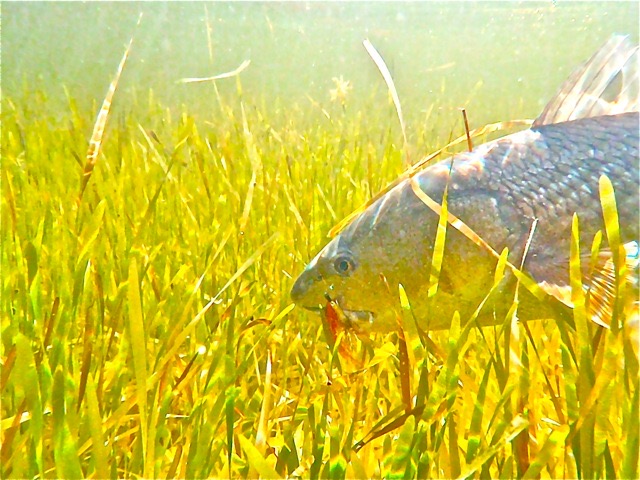Did you ever notice how you seem to find certain fish when you are not really looking for them? For example, the elusive slot size snook is always a tough find. That is unless you are on the lookout for schooling redfish, and then it is uncanny how all of a sudden you seem to notice the right size snook popping up all over the place. Go figure! Even when looking for redfish in general, there are several schools of thought on whether fishing schools are even the most effective way to go. But we’ll leave that subject for another day, as I am just thinking about how much fun it is to even see and then get a shot at a good size school of more than 100 reds. After all, fishing is supposed to be fun right?
When looking for larger schools of fish, plan to put in lots of time just plain searching or hunting. If you ever happen to see a couple of anglers standing on the bow of a boat running the trolling motor just cruising around, there is a good chance they are on the hunt. For the most part, these larger size schools are going to be located out on a flat that can consist of either a bar structure, thick sea grass, or a combination of the two. Additionally, these fish will move with the tide. For example, when the falling tide drains the flat, they will fall back off the flat into areas of deeper water. Conversely, when the tide begins pushing back onto the flat, the fish will move with the water in order to feed on the bottom that has been unreachable for the last couple of hours. For this reason, the incoming is my favorite tide to fish this particular fishery, but redfish will eat on the falling tide as well. All that is really important is that the tide is moving one-way or the other.
On the shallow tidal flats of Charlotte Harbor and the surrounding area the redfish are very aware of their surroundings. In other words, unless we are very quiet, the fish are aware of our presence. Just try to keep up with a school with the trolling motor running and you will see what I mean. The most important thing that we can do besides being stealthy is to try to the best of our ability to determine where the fish are heading and get ahead of them in order to get in a couple good shots. We basically want to be sitting where the fish are going. Sometimes you get it right and sometimes they are just plain out of casting distance.
One of the first patterns that we want to establish is whether the tide is going or coming and without a piling or other structure to help us with this determination, it can be somewhat difficult to see the tide moving. That is, unless we use the available sea grass to help us read just what direction and how hard the tide is moving. And is important to keep in mind that no matter how quick we determine for example that the tide has switched and it is beginning to come in, the fish were aware of this natural occurrence way before we were. At first, after a tide change, the bend in the blades of grass will be subtle, but on a strong tide, after the water gets flowing, the grass can be bent completely over sideways. It is when you see the subtle change of the switch that you need to start concentrating the opposite direction. For example, the other day we were working the outside edges of a flat on the last of the outgoing, but as soon as we noticed the slack period in which the grass stopped laying over pushing out, we new it was time to work our way back inside to where we knew the fish would head. What’s more, even with this sort of quick thinking, there were still fish that slipped around and got behind us.
All things considered, the various bays and sounds that make up our fishery do include differences in bottom cover, but generally there is usually some type of sea grass somewhere close. Even if you just want to know if there is going to be enough water to float your boat as you move up a flat, it is always a good idea to know whether the tide is coming in or going out. Moreover, there has been more than one occasion in which the tide station information on my GPS has told me for example that the tide should be coming in but the sea grass told me otherwise. So, to help you better work your way around a shallow tidal flat and stay ahead of moving fish, use the documented tide information as a general guideline, but let the bottom cover give you the real story.


Recent Comments